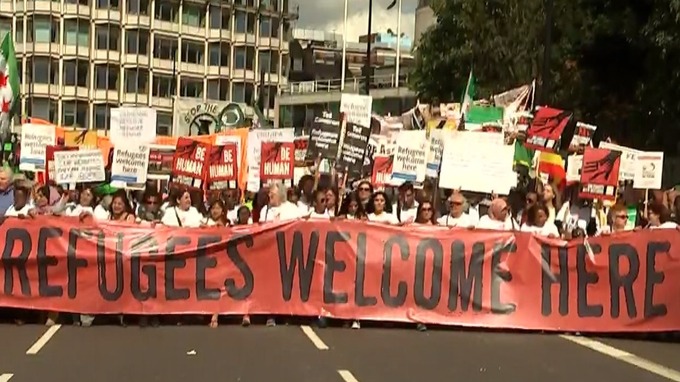 |
Cover photo of the UNHCR Report Desperate Journeys 2018: A woman weeps, minutes after being saved by the Sea Watch search and rescue ship on 24 June 2016. © UNHCR/Hereward Holland
|
Desperate Journeys Beyond Walls
Dr. Marco Tavanti, AGI-Rome Director
Implicitly referring to the new Italian anti-immigrant policies, the report describes how “shifts” in policy by some Member States, 2018 saw how about six people died every day in the Mediterranean Sea. Despite a major drop in the number of arrivals reaching European shores, and the Italian ports in particular, an estimated 2,275 died or went missing. This is considered a very conservative figure as the sea is no longer monitored as in the past. Yet, still one person died at sea for every 14 who arrived in Europe – a sharp rise on 2017 levels. In addition, last year there has been numerous incidents where large numbers of people were left stranded at sea for days on end, waiting for permission to dock.
Speaking at the launch of the Report, Filippo Grandi, said, “Saving lives at sea is not a choice, nor a matter of politics, but an age-old obligation. We can put an end to these tragedies by having the courage and vision to look beyond the next boat, and adopt a long-term approach based on regional cooperation, that places human life and dignity at its core.”
The report refers to the Italian agreement with the Libya where returned migrants face appalling conditions inside detention centers. The report goes on, “For many, setting foot in Europe was the final stop of a nightmarish journey on which they had faced torture, rape and sexual assault, and the threat of being kidnapped and held for ransom. States must take urgent action to dismantle smuggling networks and bring perpetrators of these crimes to justice.”
The report also indicates hope for lasting and humanitarian solutions. “Despite political deadlock on progressing with a regional approach to sea rescue and disembarkation, as called for by UNHCR and IOM last year, several states committed to relocating people rescued in the central Mediterranean – a potential foundation for a predictable and lasting solution.” “Thousands of resettlement places were also pledged by states for evacuating refugees out of Libya.”
In spite the attempted deterrents and human rights violation consequences of these policies, desperate migrants continue to flow to Europe using alternative routes. For the first time in recent years, Spain became the primary entry point to Europe in 2018, with the number of migrant arrivals in Spain increasing by 131 percent compared to the previous year. Around 6,800 arrived by land and a further 58,600 people successfully crossed over the perilous Western Mediterranean. As a result of these more dangerous routes, the death toll for the western Mediterranean nearly quadrupled from 202 in 2017 to 777.
The experience of Europe should teach some lessons in the American debate over the proposed US-Mexico wall. Neither building walls nor closing ports can stop forced displacements largely driven by desperate human rights and extreme poverty conditions. Walls and closed ports simply make migrations routes more dangerous. The reality reported by this reports and numerous other studies, demonstrated that walls do not save lives (as President Trump claimed) but further endanger lives of forced migrants who desperately seek refugee, protection, and better conditions of life for themselves and their families.
In the meantime, NGOs carry on the torch of humanity and for the promotion of regular migration flow and reasonable rescue policies. In spite the anti-They have denounced the EU to be complicit in this humanitarian tragedy. With the support of the EU, Italy and Libya in February 2017 signed a deal to stem the flow of migrants from North Africa to Italy. As a result of this deal, Oxfam and other NGOs estimate that more than 4,000 people have drowned in the Central Mediterranean alone, and more than 5,300 in all corners of the Mediterranean Sea, making it the deadliest sea in the world. Oxfam, Doctors without Borders, Caritas Europe, Mani Tase and many others have written an open letter to Ministers for a Timely and Predictable European Arrangements for Disembarkation.
In spite the US boycott and the Italian and other political withdrawals from the Global Compact on Migration, the numerous countries represented in the so-called Marrakech Compact have pledged to boost cooperation in addressing the world's growing flows of migrants. This important document and its process will be a reference for all future initiatives dealing with cross-border human mobility. In 2018, forced displacement continues to be a crisis primarily centered in developing countries which host 89% of refugees and 99% of internally displaced persons. The role of the economically privileged Global North toward the economically disadvantaged Global South is to provide hospitality and opportunities for those who have enough courage to attempt these desperate journeys.











